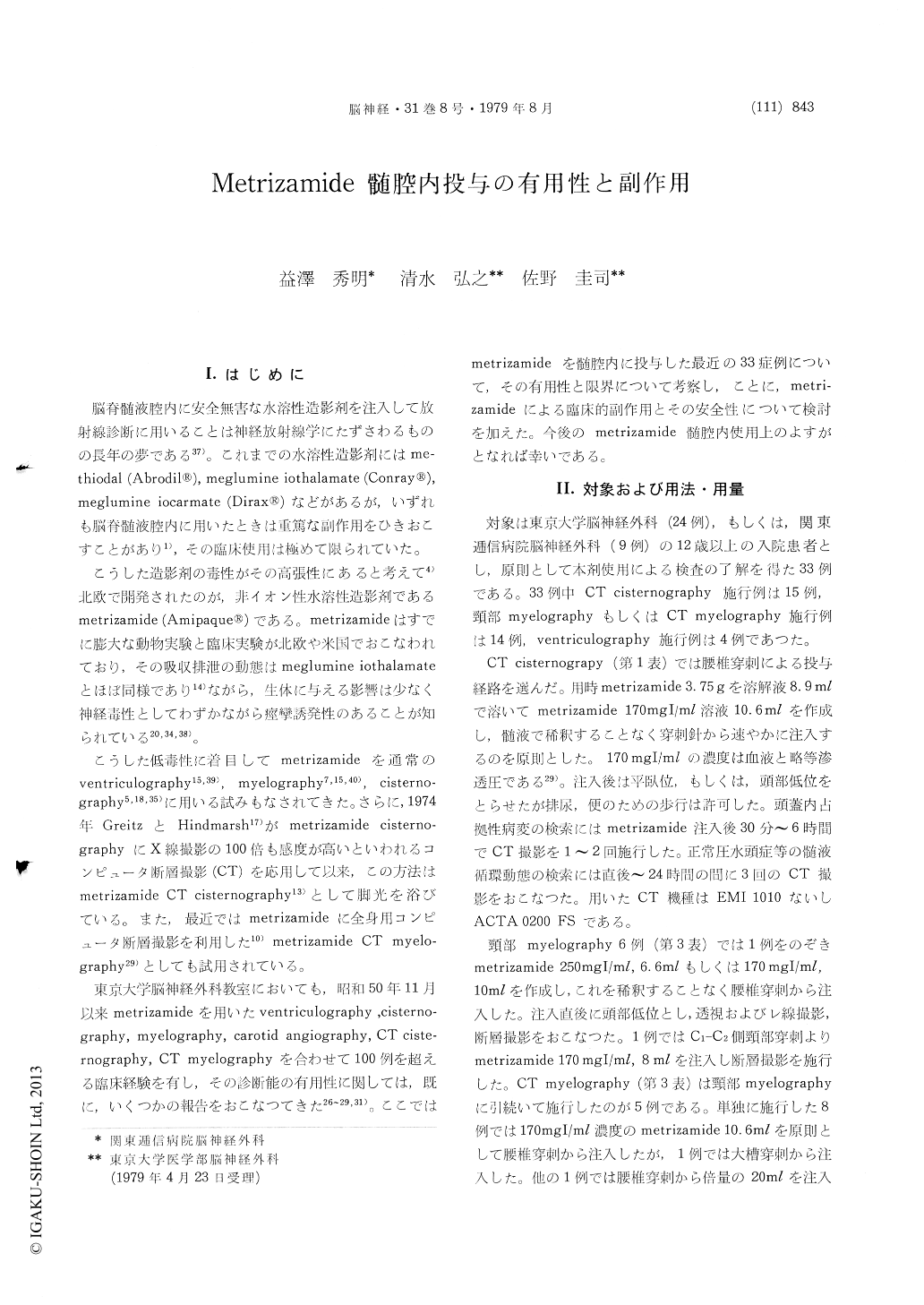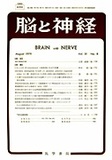Japanese
English
- 有料閲覧
- Abstract 文献概要
- 1ページ目 Look Inside
I.はじめに
脳脊髄液腔内に安全無害な水溶性造影剤を注入して放射線診断に用いることは神経放射線学にたずさわるものの長年の夢である37)。これまでの水溶性造影剤にはme—thiodal (AbrodilR),meglumine iothalamate (ConrayR),meglumine iocarmate (DiraxR)などがあるが,いずれも脳脊髄液腔内に用いたときは重篤な副作用をひきおこすことがあり1),その臨床使用は極めて限られていた。
こうした造影剤の毒性がその高張性にあると考えて4)北欧で開発されたのが,非イオン性水溶性造影剤であるmetrizamide (AmipaqueR)である。metrizamideはすでに膨大な動物実験と臨床実験が北欧や米国でおこなわれており,その吸収排泄の動態はmeglumine iothalamateとほぼ同様であり14)ながら,生体に与える影響は少なく神経毒性としてわずかながら痙攣誘発性のあることが知られている20,34,38)。
Radiographic quality as well as adverse effects of intrathecal metrizamide instillation was pro-spectively investigated in thirty-three clinical cases admitted to the department of neurosurgery, University of Tokyo Hospital, and Kantoh Teishin Hospital.
Metrizamide CT cisternography was performed in fifteen cases using in most cases 10 ml of 170 mg I/m/ solution through lumbar route. Eleven cases exhibited "normal"pattern CSF circulation and the remaining four,"delayed"pattern. Eight cases (53%) experienced headache, nausea, and/or vomiting several hours after the instillation. All of these belong to the"normal "pattern group. Four cases of "normal"pattern received electro-encephalographic examinations before and after metrizamide instillation. Three revealed appearance of negative spike and slow wave burst or sharp waves one to twenty-four hours after the instilla-tion, along with penetration of metrizamide into brain parenchyma. Diagnostic quality was inter-preted as"good"in eleven cases. Small acoustic neurinoma, pituitary adenoma, arachnoid cyst, and subdural hygroma were diagnosed among others.
Metrizamide ventriculography was done in four cases. No untoward effect of significance was attributed to metrizamide per se.
Cervical myelography and/or CT myelography was done in fourteen cases using, in most cases, 10 ml of metrizamide 170 mgI/m/. Polytome tomography with metrizamide instillation through lateral cervical puncture was highly diagnostic, whereas, ordinary X-ray with lumbar instillation yielded less satisfactory results. CT myelography in cases of subarachnoid block required good con-sideration on instillation site and positioning of the patient. Six cases (50%) among twelve cases where metrizamide had run into the cranial cavity experienced headache, nausea, and/or vomiting to a lesser degree than those of cisterno graphy.
Metrizamide is the first contrast agent ever made which can be safely introduced into human sub-arachnoid space, if administered judiciously. nervous
However, metrizamide is weakly toxic to central system and provokes minor untoward effects as well as electroencephalographic abnormalities and, sometimes, clinical convulsive seizure.
It would be wiser to restrict the dosage of metrizamide in cisternographic study, expecially in cases of "normal"pattern CSF circulation, to 1.2 gI or 7 ml of 170 mg I/m/ solution. Routine use of X-ray cisternography should thus be dis-couraged because it needs higher concentration of metrizamide in the intracranial cisterns.

Copyright © 1979, Igaku-Shoin Ltd. All rights reserved.


